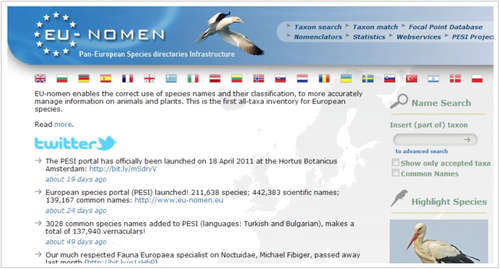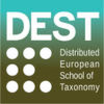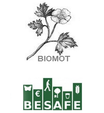The ASEAN Centre for Biodiversity (ACB) marked its 10th year with the theme, "ACB and ASEAN Member States: A Decade of Cooperation on Biodiversity Conservation." The celebration covered a number of activities on 2 October 2015 at the College of Forestry and Natural Resources, University of the Philippines, Los Banos, Philippines. These included the groundbreaking ceremony of the new ACB headquarters; Tree Growing Activity at the "Tree World"; awarding of the Zooming in on Biodiversity Photo Contest Winners; and "Nawa'y Muli Tayong Makauwi," a musical theatre show on biodiversity conservation.
The event provided ACB with an opportunity to promote the milestones of the Centre, and a venue for the ASEAN Member States, ACB and its partner organizations and countries to get together and further strengthen collaborations and reaffirm commitments to conserve the rich biodiversity of the ASEAN region.
Find more updates in the latest ASEAN Biodiversity Bulletin.
The Distributed European School of Taxonomy (DEST), an initiative under the CETAF umbrella and managed by RBINS, has launched its training programme for 2015-2016.
Check out the Expert-in-training programme enabling trainees to develop and strengthen their taxonomic research skills through on-the-job-training and the Modern Taxonomy programme offering intensive theoretical courses in various subjects.
The Distributed European School of Taxonomy (DEST) was established within the framework of the EU funded project European Distributed Institute of Taxonomy (EDIT) and under the umbrella of the Consortium of European Taxonomic Facilities (CETAF). The EDIT consortium agreement lasted from March 2006 until March 2011. Since then, the Royal Belgian Institute of Natural Sciences (RBINS) remains responsible for the continued management of DEST, organization of courses and related logistical matters. The DEST currently includes a network of around 100 training providers from 60 institutions.
October 2015 updates for both FishBase (www.fishbase.org) and SeaLifeBase (www.sealifebase.org) are now online!

The new GEO BON bi-annual report is now published. It provides an overview of the activities developed by our network over the last two years. It starts with a brief presentation of the GEO BON mission and structure.
It also presents the two core activities of GEO BON: the development of the Essential Biodiversity Variables framework and of the Bon-in-a-Box toolkit. The different national, regional and thematic biodiversity observation networks associated with GEO BON are presented. The report highlights the most important activities from each of the nine working groups of GEO BON, where experts around the world work around specific biodiversity monitoring topics.
For more information, download the report here.
Post-doctoral scientist position is open for the project "Towards an integrated prediction of Land & Sea Responses to global change in the Mediterranean Basin" (LaSeR-Med), which focusses on integrated socio-ecological modelling. The duration of the contract is initially one year, with a possible extension for a second year, depending on the initial results. The post-doc will be based within the Mediterranean Institute of marine and terrestrial Biodiversity and Ecology (IMBE) in Aix-en-Provence, France. The project is part of the Labex OT-Med (http://www.otmed.fr/).
Applicants should hold a doctoral degree in physics, chemistry, microbiology, geosciences, environmental sciences or a related field of science. They should be familiar with modelling biogeochemical interactions between ecosystems and capable to further develop existing numerical ecosystem models. Programming skills (C) and modelling experience are therefore mandatory. Knowledge of R and of Unix/Linux environment will be an advantage. The candidate should have good written and oral communication skills. For work, good skills in the English language will be essential.
The project:
Terrestrial and marine ecosystems are connected through groundwater, river discharge and nutrient outflows (especially N and P). River catchments in the Mediterranean are N-intensive regions, mostly due to intensive agriculture in the North and to crop N2 fixation or food & feed import in the South. The fraction of nutrient reaching the sea constitutes significant anthropogenic forcing of many marine biological processes. For simulating the dynamics of the first levels of the marine food web (from nutrients to jellyfishes), the ocean biogeochemical model, Eco3M-MED, used and developed by the Mediterranean Institute of Oceanography (MIO) within OT-Med, currently uses N and P measurements at river mouths, e.g. for the Rhône.
In order to estimate the impacts of global change on the functioning of marine ecosystems, the project aims at modeling the dependency of N and P outflows to the Mediterreanean sea toward land management. Land management is modelled as part of the agro-ecosystem model LPJmL (Bondeau et al., 2007), that has been especially adapted to the Mediterranean cropping systems (Fader et al., 2015). Among others, LPJmL simulates the daily carbon and water cycles, and the river discharges to the sea. Following existing approaches in the scientific literature, the post-doc will implement the nutrient N and P transfer in LPJmL, covering the net nutrient inputs to the river catchments by accounting for the processes occurring at the agro-ecosystem level (N2 biological fixation, fertilization, atmospheric deposition) and the net food and feed imports. Since only a minor fraction of the net nutrient inputs from Mediterranean basins reaches the sea, the retention along the nutrient cascade will have to be added to the LPJmL river routing scheme, similarly to the method used by the Riverstrahler model. Once the nutrient transfers have been introduced into LPJmL, simulations will be validated using current climate and land use forcing for comparisons with the existing observations from river outlets. Finally, future conditions will be assessed by using the model with scenarios of changing regional climate and land use / land management.
Your application:
Applications should contain a suitable motivation letter describing your anticipated role in the project, a CV, a list of scientific publications and the names of at least two scientists that can be contacted for references. They must be sent to Ms. Gabriela Boéri (gabriela.boeri@imbe.fr). Please prepare your application as a single file in pdf-format.
Questions about the project or the position can be directed to Dr. Alberte Bondeau (alberte.bondeau@imbe.fr). The position will be filled as soon as a suitable candidate has been found – work should start soon after that date. The salary and contract conditions will be determined according to standards set by Aix-Marseille University – questions in this regard can be directed to Sophie Pekar (pekar@otmed.fr).
The 1st GLOBAQUA International Conference will be held on 11-12 January 2016 in Freising, Germany. The interdisciplinary conference will go under the motto "Managing The Effects Of Multiple Stressors On Aquatic Ecosystems Under Water Scarcity".
The conference will serve as a platform for exchange and discussion of innovative scientific findings and methods in aquatic ecosystems research. It will focus on novel methods of environmental monitoring and modeling of various scopes, scales and structural complexity to improve process understanding the interconnectivity and feedback mechanisms of climate (regional), land use (regional), economy, hydrology and hydraulics (catchment and river), water quality (river), biology and aquatic ecosystems (reach scale). Further, the conference builds the bridge to the scientific assessment of implications on policy and management.
The deadine for submitting an abstract for the conference has been now extended until 7 Nov 2015.
More information on the conference, registration, abstract submitting is available on the GLOBAQUA website.
The Royal Museum for Central Africa (RMCA) in Tervuren (Belgium) is part of the FishBase Consortium and responsible for the information on the fresh- and brackish water fishes of Africa in the FishBase database. Through an agreement with the Belgian Development Cooperation and as part of the FishBase program, the RMCA has five (5) grants available for a 3-month training program in the use of FishBase and the taxonomy of African fishes.
The training will have three subsets:
- A detailed explanation of FishBase in all its aspects;
- A training in the taxonomy of African fishes;
- A case study based on data from FishBase or on taxa for which taxonomic problems have been encountered.
This course has been offered annually since 2005 and is held at the Royal Museum for Central Africa (Leuvensesteenweg 13, B-3080 Tervuren, Belgium). For more information and to apply for this three-month training grant, see: http://fishbase.africamuseum.be or www.fishbaseforafrica.org. Please note that for 2016, this course will be given in French only.
Questions? Contact Dimitri Geelhand de Merxem (dimitri.geelhand@africamuseum.be).

ecoSERVICES is seeking a new host institution to establish its international project office from 2016. Expressions of interest will be examined with the scientific steering committee on the week of 30 November 2015.
Currently hosted at the Institut Méditerranéen de Biodiversité et d’Ecologie (IMBE) in France, ecoSERVICES is seeking a new host for its international project office from 2016
The ideal host institution works on scientific issues related to biodiversity, ecosystem services and human well-being, at various scales from local or national to global; and meets a few practical specifications via direct funding or in-kind support for establishment of a fully operational office.
Expressions of interest need to be sent to Karine Payet-Lebourges by email with subject "ecoSERVICES IPO – Offer".
Applications will be examined with the scientific steering committee on the week of 30 November 2015.
More information here.
Looked down on with scepticism by many taxonomists, handling big data efficiently is a huge challenge that can only be met with thorough and multi-layered efforts from both scientists and technological developers. Projects like the Pan-European Species-directories Infrastructure (PESI), started in 2009, prove that harmonised taxonomic reference systems and high-quality data sets are possible through dynamic, expertly created and managed online tools. The methods, results and future prospects of PESI are available in the open access Biodiversity Data Journal.
With environmental changes occurring at an unprecedented rate around the world, biological communication needs to be left off the pace at no point. Phenomena such as species' migration, extinction, intrusion; ecosystem stability; decline of pollinators and pest invasion have to be monitored closely and identified momentarily. In order to do so, proper identification based on reliable and easily accessible data is crucial.

Therefore, the three key objectives of PESI include standardisation in taxonomic reference systems, enhancement of the quality and completeness of taxonomic data sets and creation of integrated access to taxonomic information. The five pillars of biological community networks, Zoology, Botany, Marine Biota, Mycology and Phycology, have been integrated in five infrastructural components: knowledge, consensus, standards, data and dissemination.
As a result, PESI did not only merge data from a range of sources and published a total of nearly 450,000 scientific names online. It also maintains networks of outstanding experts and national focal points, so that it makes sure that the taxonomic information, it relies on, is always at its finest, while simultaneously takes care about delivering persistent standards and easily accessible up-to-date biodiversity data.
PESI results will also feed as an essential part for the advancement of relevant EU projects, such as Building the European Biodiversity Observation Network (EU BON). In the EU BON project, the PESI Backbone will be advanced to satisfy the needs of the GEO BON / GEOSS system, also serving as a taxonomic backbone for the projected EU BON Biodiversity Portal.
Aiming at standardisation and integration of taxonomic data across platforms PESI also works in close collaboration with other relevant projects including GBIF, LifeWatch, the Catalogue of Life, the Encyclopedia of Life, the Global Names Architecture, GÉANT, ViBRANT, OpenUp!,BioVeL, iMarine , EU BON and BiodiversityKnowledge .
"Scientific names are key carriers of biodiversity information. Therefore, for the efficient exploring and integration of biodiversity data, the development of a functional taxonomic resolution system, including the establishment of a shared taxonomic standard (as a core component), is essential for all sorts of biodiversity assessments. PESI provides such an infrastructure for Europe, integrating the relevant technical (informatics) and social (knowledge & users) networks into a common work program, serving a wide community of biodiversity workers," says Dr. Yde de Jong, coordinator of the Pan-European Species-directories Infrastructure (PESI) project.
"The PESI Taxonomic Backbone serves as a taxonomic data standard resource, facilitating and optimising the integration and sharing of European biodiversity data, supporting a wide range of European services, major biodiversity programs and stakeholders on nature conservation and biodiversity management," conclude their results the scientists.
Original Source:
de Jong Y, et al. (2015) PESI - a taxonomic backbone for Europe. Biodiversity Data Journal 3: e5848.doi: 10.3897/BDJ.3.e5848
Additional Information:
The Pan-European Species-directories Infrastructure (PESI) provides standardised and authoritative taxonomic information by integrating and securing Europe's taxonomically authoritative species name registers and nomenclators (name databases) and associated expert(ise) networks that underpin the management of biodiversity in Europe. PESI kicked-off as an EC-FP7 project, running from 2009 to 2011.
PESI proceeded from the EC-FP6 Networks of Excellence EDIT, on developing a European Distributed Institute of Taxonomy, and MarBEF, on Marine Biodiversity and Ecosystem Functioning.
Building the European Biodiversity Observation Network (EU BON) is a European research project, financed by the 7th EU framework programme for research and development (FP7). EU BON seeks ways to better integrate biodiversity information and implement into policy and decision-making of biodiversity monitoring and management in the EU.
The 2016 European Space Agency Living Planet Symposiumwill be held in Prague, Czech Republic from 9-13 May 2016 and is organised with the support of the Ministry of Transport, Ministry of Environment and Ministry of Education, Youth and Sports of the Czech Republic. The event follows previous successful symposia held in Edinburgh (2013), Bergen (2010), Montreux (2007) and Salzburg (2004).
The first announcement has been now released, with a deadline for abstract submission on 16 October 2015.
All received abstracts will be reviewed by a Scientific Committee, notification of acceptance will be provided in early February 2016. Registration to attend the event (free of charge) will be opened in February 2016, after the publication of the preliminary programme.
The objectives of the ESA Living Planet Symposium are to:
- Present the progress and plans for the implementation of ESA Earth Observation strategy and the relevance of ESA's EO Programme to societal challenges, science and economy.
- Provide an international forum to scientists, researchers and users to present and share state of the art results based on ESA's Earth Observation and third-party mission data.
- Review the development of Earth Observation applications.
- Present the Copernicus space component and operational services.
- Report on ESA’s Exploitation Programmes (i.e. Climate Change Initiative, SEOM, DUE, VAE, STSE).
- Introduce the current and future planned Earth Observation missions.
- Outline ESA’s international cooperation in the field of Earth Observation.
- Provide dedicated thematic tutorials and demonstrations.
For more information, please visit: http://lps16.esa.int
The European Environment Agency (EEA) and the European Space Agency (ESA) signed a Memorandum of Understanding, which sets out common objectives and areas of cooperation in the field of Earth observation and the environment over the coming years, announces a news item published on the EEA website.
Satellite data, such as that provided by the ESA, is a key component of environmental knowledge. The broader view satellite measurements offer of a particular subject at a particular time have improved environmental monitoring, leading to more evidence based policy and, ultimately, better environmental management.
The Memorandum of Understanding sets objectives for the exchange of scientific expertise and technical information between the agencies, providing the basis for mutual access to data and the promotion of joint activities.
Read more in the original news item here.
Global biodiversity loss is intensifying. But it is hard to assess progress towards the Aichi Biodiversity Targets for 2011–20 set by the Convention on Biological Diversity (CBD). Target 5, for instance, aims to halve global deforestation rates by 2020; but reliable indicators for deforestation that can be monitored remotely have not been developed or agreed on. National biodiversity monitoring programmes differ widely, most data sets are inconsistent, and few data are shared openly.
Read more on the topic in the original commentary article.
One of our recent associated partners, the EU project GLOBIS-B has published its first paper: "Towards global interoperability for supporting biodiversity research on essential biodiversity variables (EBVs)". You can find the article here.
Abstract:
Essential biodiversity variables (EBVs) have been proposed by the Group on Earth Observations Biodiversity Observation Network (GEO BON) to identify a minimum set of essential measurements that are required for studying, monitoring and reporting biodiversity and ecosystem change. Despite the initial conceptualisation, however, the practical implementation of EBVs remains challenging. There is much discussion about the concept and implementation of EBVs: which variables are meaningful; which data are needed and available; at which spatial, temporal and topical scales can EBVs be calculated; and how sensitive are EBVs to variations in underlying data? To advance scientific progress in implementing EBVs we propose that both scientists and research infrastructure operators need to cooperate globally to serve and process the essential large datasets for calculating EBVs. We introduce GLOBIS-B (GLOBal Infrastructures for Supporting Biodiversity research), a global cooperation funded by the Horizon 2020 research and innovation framework programme of the European Commission. The main aim of GLOBIS-B is to bring together biodiversity scientists, global research infrastructure operators and legal interoperability experts to identify the research needs and infrastructure services underpinning the concept of EBVs. The project will facilitate the multi-lateral cooperation of biodiversity research infrastructures worldwide and identify the required primary data, analysis tools, methodologies and legal and technical bottlenecks to develop an agenda for research and infrastructure development to compute EBVs. This requires development of standards, protocols and workflows that are ‘self-documenting’ and openly shared to allow the discovery and analysis of data across large spatial extents and different temporal resolutions. The interoperability of existing biodiversity research infrastructures will be crucial for integrating the necessary biodiversity data to calculate EBVs, and to advance our ability to assess progress towards the Aichi targets for 2020 of the Convention on Biological Diversity (CBD).
Original Source:
W. Daniel Kissling et. al. (2015) Towards global interoperability for supporting biodiversity research on essential biodiversity variables (EBVs). Biodiversity. DOI: 10.1080/14888386.2015.1068709
It has been recognized that issues regarding the sustainability and interoperability of data collected by citizens hinder the re-usability and integration of these data across borders. The European Commission’s Joint Research Centre (JRC), is following up on these findings with a detailed study of interoperability arrangements, hosting and data management practices of Citizen Science projects. These activities include a survey designed to capture the state of play with regard to data management practices on the local, national and continental scales. The questions are especially inspired by the recently proposed data management principles of the Group on Earth Observations and those of the Belmont Forum.
Beyond the pure stocktaking and awareness raising, the results should establish a base line for prioritizing follow-up activities and measuring progress. The results will also inform the discussion on the potential roles of the European Commission – and especially the JRC – in Citizen Science.
After discussions with members of the European Citizen Science Association (ECSA) and the international Citizen Science Association (CSA), it was decided to open the scope of the questionnaire to the international community, so that non-EU and globally acting organizations could also benefit from the outcomes.
The survey will be open until 31 August 2015, and the results of the subsequent analysis will be available by the end of September. We invite all those involved in Citizen Science projects to take the survey in order to provide us with invaluable information and insight into Citizen Science projects and best practice.
Take the Survey! >> https://ec.europa.eu/eusurvey/runner/CSDataManagement
The 2016 GEO BON Open Science Conference: "Biodiversity and ecosystem Services Monitoring for the 2020 Targets and beyond. Building on observations for user needs" will take place from 4 to 9 July 2016 in Leipzig, Germany.
Biodiversity Science is facing enormous challenges as the pressures upon the earth’s biotic systems are rapidly intensifying and we are unlikely to reach the CBD 2020 Aichi Targets. But how far or close are we to reach the targets? The GEO BON Open Science Conference on "Biodiversity and Ecosystem Services Monitoring for the 2020 Targets and beyond" will assess this question. The conference is open to the wide scientific public and is sponsored and co-organized by iDiv, UFZ, SASCAL (others to come).
For more information please visit: http://conf2016.geobon.org
Future Directions for Scientific Advice in Europe was published in April 2015 and updated in June 2015 to take account of developments in the European Commission, focuses on scientific advice in Europe.
A free digital copy of and more information on Future Directions for Scientific Advice in Europe can be found here.
The joint BESAFE/BIOMOT Conference "Motivations and arguments to act for biodiversity" took place on 10 & 11 June 2015 in Brussels, Les Ateliers des Tanneurs. The main objective of the conference was to present alternative ways to inspire innovative policy making to act for nature.
Based on four years of large-scale research by the two European projects, the conference aimed to define what could really work to motivate society to act for nature. The conference involved a wide audience in high-level keynotes, science-policy interface sessions, stakeholder meetings and panels.
The joint event was also a platform for the BESAFE project Final Conference where the beta version of the BESAFE tool was presented and tested. The tool is planned as a user-friendly application where stakeholders can browse project results and background information to help them to help them to improve biodiversity argumentation.
The European Environmental Agency (EEA) has published its Annual Report describing the work carried out by the EEA in 2014. The EEA annual report includes the EMAS environmental statement 2014.
Download the report here.




 RSS news
RSS news












 Survey Flyer
Survey Flyer




